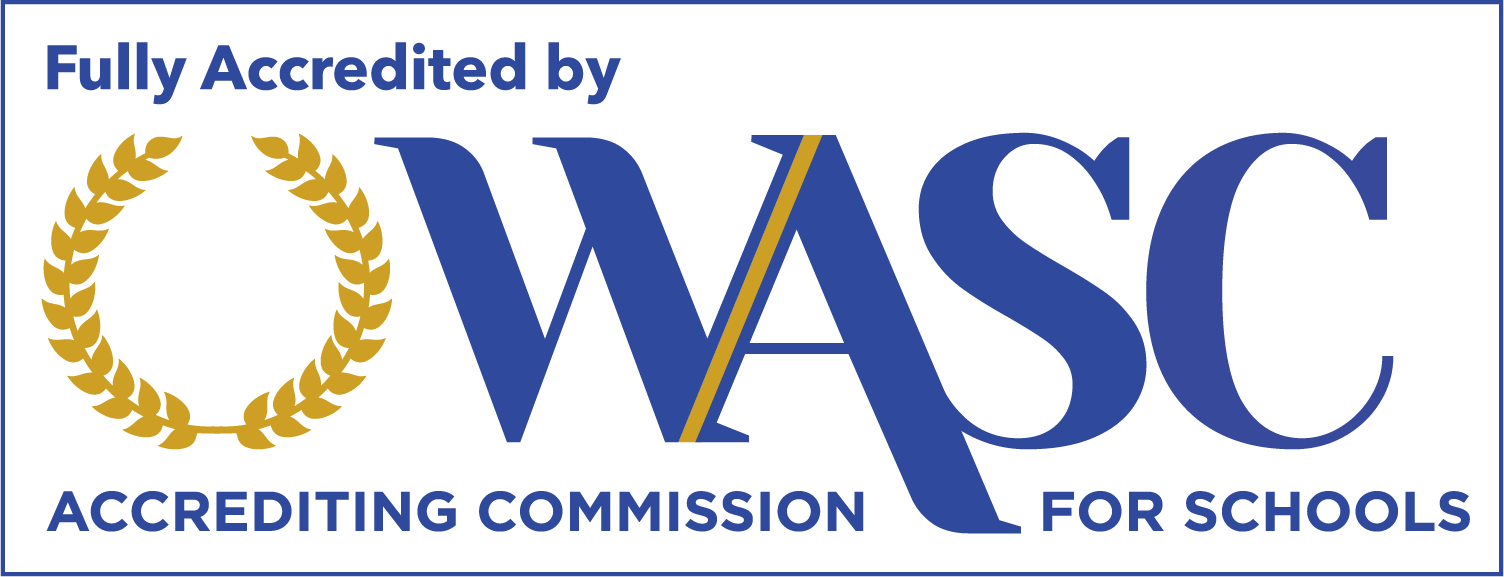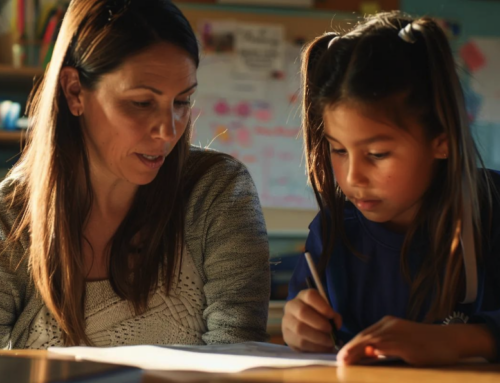The Science and Timing of Early Reading Intervention
At READ Academy, Sacramento’s only WASC-accredited school exclusively for dyslexic learners, our specialists hold advanced certifications in Orton-Gillingham and structured literacy. We’ve assessed over 1,000 students and provided evidence-based intervention to hundreds more.
The stories we hear are remarkably consistent. Parents describe kids who can build complex Lego sets from memory but can’t decode simple sentences. Children who understand advanced math concepts but mix up b’s and d’s. Behind these patterns is a neurological difference in how the dyslexic brain develops. In this blog, we’ll explain why early reading intervention transforms these outcomes.
When Reading Doesn’t Click: The Neuroscience Behind The Dyslexic Brain
So what’s actually happening in your child’s brain? Unlike speaking, which develops naturally, reading requires the brain to connect three separate areas: the visual center, the sound center, and the meaning center. For most children, these connections form relatively easily with basic instruction. But for children with dyslexia – affecting up to 20% of students – these connections need to be built differently.
Brain imaging shows us exactly what’s happening. When typical readers see a word, information flows smoothly through the left side of the brain. But when children with dyslexia read, the left side under-activates while the right side and frontal regions work overtime to compensate. They’re taking the long way around to get to meaning, which exhausts them.
This difference has nothing to do with intelligence. Many children with dyslexia have above-average IQs and excel in problem-solving, creativity, and verbal reasoning. Their brains simply process written language through different pathways that need explicit construction through specialized teaching.
The critical factor is getting the right help as soon as possible. Young brains build reading pathways more quickly – what might take 6 months of intervention at age 6 could require 18 months at age 10. But here’s what matters: every child with dyslexia can learn to read successfully with proper intervention, regardless of age. We see fifth graders, middle schoolers, and even high schoolers make remarkable progress. Starting early saves time and struggle, but starting at any age changes everything.
What the Research Shows About This Critical Window
Children who receive structured literacy intervention in early elementary grades show much stronger outcomes than those who start later. Research confirms that intervention in grades K-2 requires substantially less time than intervention starting in grade 4 or later. By middle school, even intensive intervention may not fully close the reading gap.
Every year a child struggles with reading, they fall further behind in every subject. While they’re learning to decode “went,” their classmates are reading about the California Gold Rush. The knowledge gap grows exponentially.
Students who receive help in the primary grades show significantly better outcomes than those who start intervention later, even when the late-starting students receive more total hours of instruction.
Recognizing Dyslexia: Age-by-Age Warning Signs
Preschool Years (Ages 3-5): Your child might struggle to learn nursery rhymes or remember the names of colors and shapes. They may have trouble rhyming words or playing sound games. Many have delayed speech or continue to have trouble pronouncing certain words. Family history matters: if you or your spouse struggled with reading, your child has a 40-50% chance of having similar challenges.
Kindergarten and First Grade (Ages 5-7): Letter confusion persists longer than typical. Your child might know the alphabet song but can’t identify individual letters reliably. They guess at words based on pictures or context rather than sounding them out. Simple words like “the” or “was” remain mysterious despite hundreds of exposures.
Second and Third Grade (Ages 7-9): Reading remains slow and laborious. Your child avoids reading whenever possible. Spelling is particularly difficult. Homework takes hours with constant parent support. They may develop stomachaches on school days or start saying they’re “stupid” despite obvious intelligence in other areas.
Upper Elementary (Ages 9-12): The compensation strategies stop working. Your bright child who fooled everyone in early grades now can’t keep up with reading demands. They understand concepts when information is presented verbally but can’t access that same information through reading. Foreign language learning is particularly difficult. Self-esteem issues become prominent.
These aren’t phases children outgrow. A child who shows multiple signs of dyslexia should have an assessment, not more time.
Understanding Sacramento’s Educational Landscape
School District Services: California’s dyslexia laws now require schools to screen for reading difficulties starting in the 2025-26 school year. Getting school services typically requires demonstrating significant academic impact. Many bright children with dyslexia don’t qualify because they’re not far enough behind.
Response to Intervention (RTI) provides some support without a special education qualification, but it’s often generic reading support rather than specialized dyslexia intervention.
The Private Intervention Journey: Most Sacramento families try multiple approaches before finding effective help. They start with apps and workbooks, move to general tutoring, try learning center chains, and eventually realize they need something more specialized.
This is where specialized centers like READ Academy and Read Learning Center become essential. Unlike general tutoring services or traditional schools, these centers employ specialists trained in the neuroscience of reading – Read Learning Center provides specialized dyslexia tutoring with certified instructors using structured literacy methods, while READ Academy offers a complete alternative as a full-day private school for dyslexic students, delivering individualized education plans and daily one-on-one intervention that public schools cannot provide.
What Actually Works: The Science of Structured Literacy
Not all reading programs are created equal. Structured literacy is systematic teaching that builds the brain’s reading network from the ground up.
Structured literacy is:
- Explicit: Nothing is left to chance. Every sound-symbol relationship is directly taught. The rules and patterns of English are made clear.
- Systematic: Concepts build logically from simple to complex. You master short vowels before long vowels, single syllables before multisyllabic words.
- Cumulative: Constant review and practice strengthen neural pathways. New learning integrates with old, creating a strong foundation.
- Diagnostic: Teachers constantly assess understanding and adjust instruction. If a concept isn’t solid, they reteach rather than moving forward with gaps.
- Multisensory: Using sight, sound, movement, and touch simultaneously creates stronger neural pathways.
Why Generic Approaches Fail: Balanced literacy without systematic phonics leaves dyslexic students guessing. Computer programs can supplement but can’t replace human instruction that responds to individual needs. Vision therapy addresses visual issues but not the phonological core of dyslexia. Colored overlays might reduce visual stress but don’t teach reading. Generic tutoring from homework help centers reinforces ineffective strategies rather than building new pathways.
Intensity Matters: Research is clear: intervention must be frequent and intensive. Twice weekly is the absolute minimum. Four to five times weekly is ideal. The brain needs repetition to build permanent pathways.
Assessments Find the Answers That Lead to Action
A comprehensive assessment provides three critical pieces of information: why reading is hard for your child, exactly what type of intervention will help, and how intensive that intervention needs to be.
Assessment Components That Matter:
- Cognitive testing reveals your child’s learning strengths and weaknesses. Many children with dyslexia show superior visual-spatial or verbal reasoning abilities alongside weak phonological processing.
- Achievement testing documents the gap between ability and performance. This quantifies need and tracks progress.
- Phonological processing assessment identifies specific breakdown points. Can your child identify rhymes? Blend sounds? Segment words? Each skill requires different intervention approaches.
- Reading fluency assessment measures speed and accuracy. Some children decode accurately but slowly. Others read quickly but inaccurately. Treatment differs based on the pattern.
At READ Academy and Read Learning Center we offer a comprehensive paid dyslexia screening that identifies specific areas of need and creates a roadmap for intervention.
Taking Action: Your Timeline for Success
If Your Child Is 6-7 Years Old (K-1st Grade): This is prevention territory. Any consistent struggle with letters, sounds, or early reading warrants immediate action.
If Your Child Is 8-9 Years Old (2nd-3rd Grade): You’re in a critical zone. Intensive intervention starting now can still build strong reading pathways, but the window is narrowing.
If Your Child Is 10-11 Years Old (4th-5th Grade): Intervention remains valuable but expect to need accommodations alongside remediation. Focus on building functional reading skills while protecting self-esteem.
If Your Child Is 12+ Years Old: Remediation takes longer but remains worthwhile. Equally important: teaching compensation strategies and building self-advocacy skills.
The Real Cost of Waiting
Early intervention is consistently more cost-effective than waiting, but money is the smallest cost.
Academic Impact: Every year of reading struggle means thousands of words not read, vocabulary not learned, and background knowledge not acquired.
Emotional Impact: Children who struggle for years without help develop anxiety, depression, and school avoidance. They often decide they’re “stupid” despite high intelligence.
Future Impact: Reading struggles that persist into middle school strongly predict academic difficulties throughout high school and beyond.
Why Families Choose READ Academy
After trying apps, general tutoring, and learning center franchises, Sacramento families discover what makes specialized intervention different. At READ Academy, specialists are certified in structured literacy approaches specifically designed for dyslexia. We systematically rebuild the neural pathways necessary for fluent reading.
Our comprehensive assessment identifies exactly where your child’s reading process breaks down. Our individualized intervention targets those specific areas with scientific precision.
Most importantly, we understand the urgency of early intervention. Our intensive, evidence-based intervention is designed to maximize progress while your child’s brain maintains optimal plasticity for reading development.
Conclusion: Don’t Talk Yourself Out of Getting an Assessment
The greatest takeaway for any parent suspecting dyslexia: don’t talk yourself out of getting an assessment.
Research shows that without intervention, 88% of children who struggle with reading in first grade will still be struggling in fourth grade. Your child already knows they’re different – they watch their friends read effortlessly while they battle with every word. But with the right help, they can catch up. An assessment shows you exactly what that help looks like.
At READ Academy and Read Learning Center, we offer a comprehensive paid dyslexia screening that identifies where your child needs help most. With this clarity, READ Academy can create a personalized intervention roadmap. As Sacramento’s only WASC-accredited school exclusively for dyslexic learners, we understand exactly what your child needs.
If your child is struggling with reading, don’t wait. Every day matters.
Call us at (916) 258-2080 or schedule a private tour today. Your child’s bright future starts here.
About the Author: Leah Skinner, M.Ed.
Leah Skinner, M.Ed., is the Founder of Read Academy and a Certified Dyslexia Therapist with over 25 years of experience. She holds a Master of Education: Dyslexia Specialist degree and is a Doctoral Candidate in Reading, Literacy, and Assessment. As a mother of five neurodiverse sons, Leah understands the challenges families face and is dedicated to empowering students through personalized, evidence-based tutoring. Her expertise and passion guide Sacramento families toward academic success and confidence.




